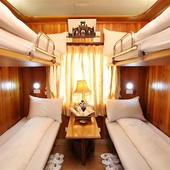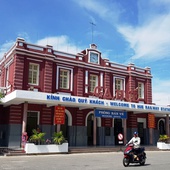North-South Train
All you need to know about the Reunification Express
The North – South Express Railway is the interprovincial train route managed by the Vietnam Railways Corporation. This railway connects Hanoi and Ho Chi Minh City, making it a key transport link between the northern and southern regions of Vietnam. It is commonly referred to as the Reunification Express.
Train Routes
This railway is one of the longest train routes in Vietnam, spanning a total length of 1,729 kilometers. It traverses through various provinces along the route, including Ha Nam, Nam Dinh, Ninh Binh, Thanh Hoa, Nghe An, Ha Tinh, Quang Binh, Quang Tri, Thua Thien-Hue, Da Nang, Quang Nam, Quang Ngai, Binh Dinh, Phu Yen, Khanh Hoa, Ninh Thuan, Binh Thuan, Dong Nai, and Binh Dương. A trip from Hanoi to Ho Chi Minh City on this railway allows you to enjoy Vietnam’s stunning landscapes, such as Hai Van Pass, Van Phong Bay, and the Truong Son Mountain ranges.
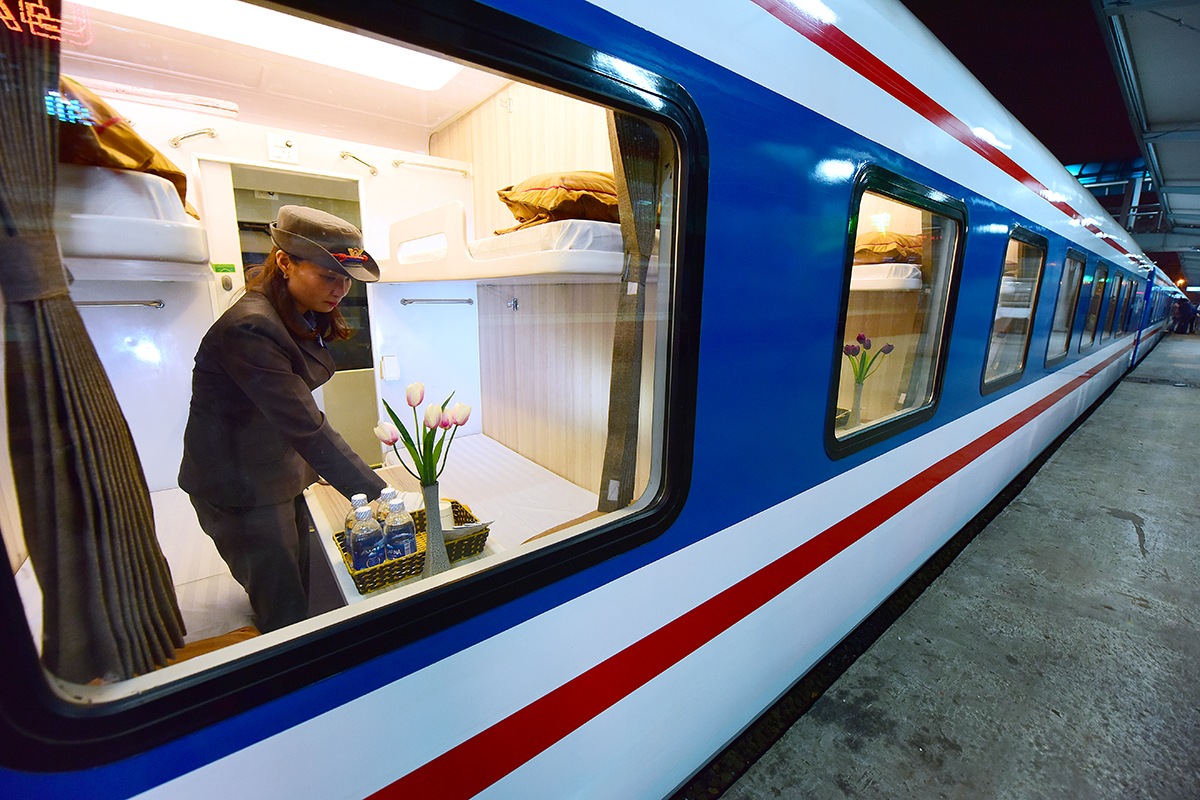 Photo: vnexpress.net
Photo: vnexpress.net
Most express trains in Vietnam operate as sleeper trains with a variety of sleeping carriages, although some trains on the North – South Express Railway also feature seating carriages. For shorter journeys, such as from Hanoi to Ninh Binh or Nha Trang to Ho Chi Minh City, a seating carriage can be a more economical choice compared to sleeper options.
Train Codes
There are two main types of trains on this route: SE and TN. The SE trains are designed to cater to tourists, offering modern carriages, better amenities, and higher speeds. They provide both hard and soft sleeper accommodations with air conditioning in each cabin. Ticket prices range from 600,000 to 2,000,000 VND for the journey from Hanoi to Ho Chi Minh City, which takes approximately 30 hours. Currently, there are four daily SE trains departing from Hanoi and four from Ho Chi Minh City.
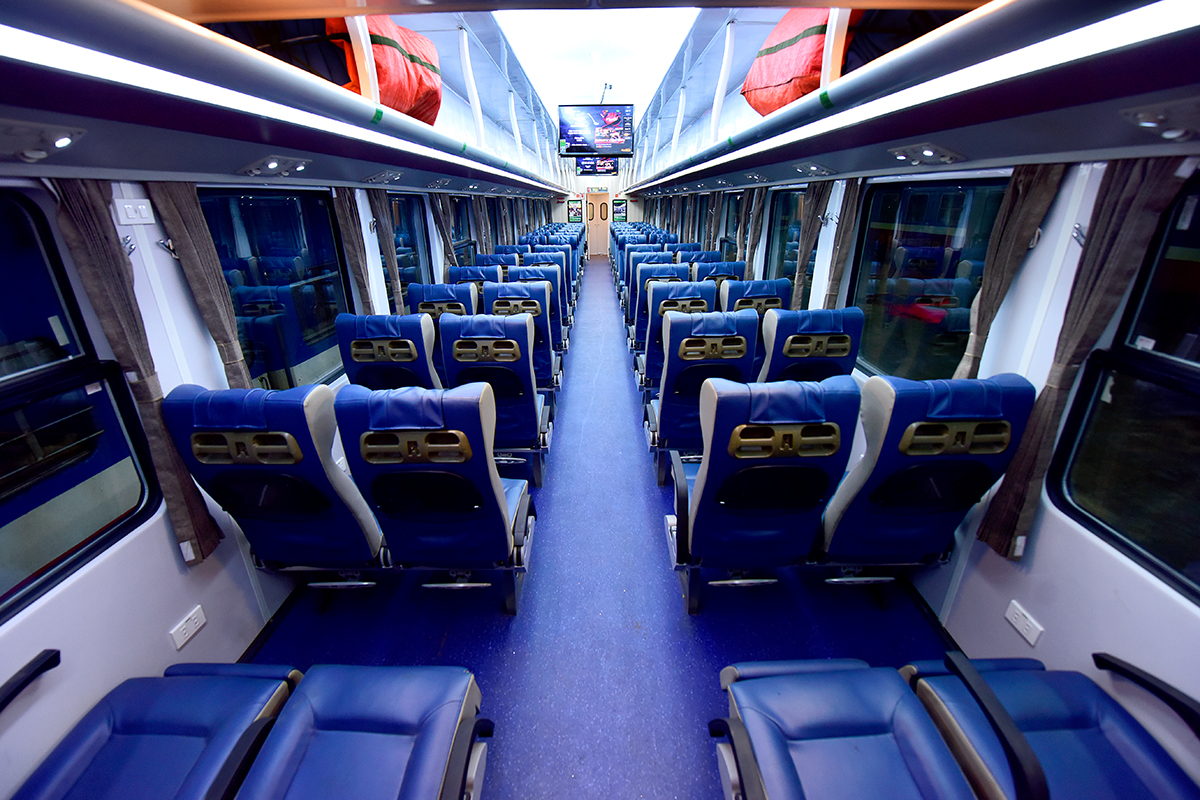
Trains SE1 and SE3 typically leave Hanoi at 19:00 and 23:00, with fewer stops compared to SE5 and SE7. Likewise, SE2 and SE4 depart from Ho Chi Minh City at the same times and have fewer stops than SE6 and SE8 (refer to the latest Hanoi to HCMC train timetable for exact schedules).
The TN trains, on the other hand, feature older carriages with hard sleepers, and not all cabins are equipped with air conditioning. These trains make stops at every station along the route, resulting in a journey that can take up to 10 hours longer than the SE trains. However, the cost is significantly lower, with fares ranging from approximately 500,000 to 1,200,000 VND.
Sleeper Carriage
Each sleeper carriage in the Reunification Train typically contains about 5 to 7 cabins, and one toilet with a shower room at the end of the carriage. There are primarily two types of cabins: 4-berth and 6-berth. Both offer similar amenities including pillows, blankets, TVs, ceiling fans, or air conditioning, but the 4-berth cabin provides more space and privacy. In both cabin types, luggage can be stored under the lower bunks.
SE trains also feature a service carriage that offers light meals and convenience items such as canned food, beverages, toiletries, and snacks.
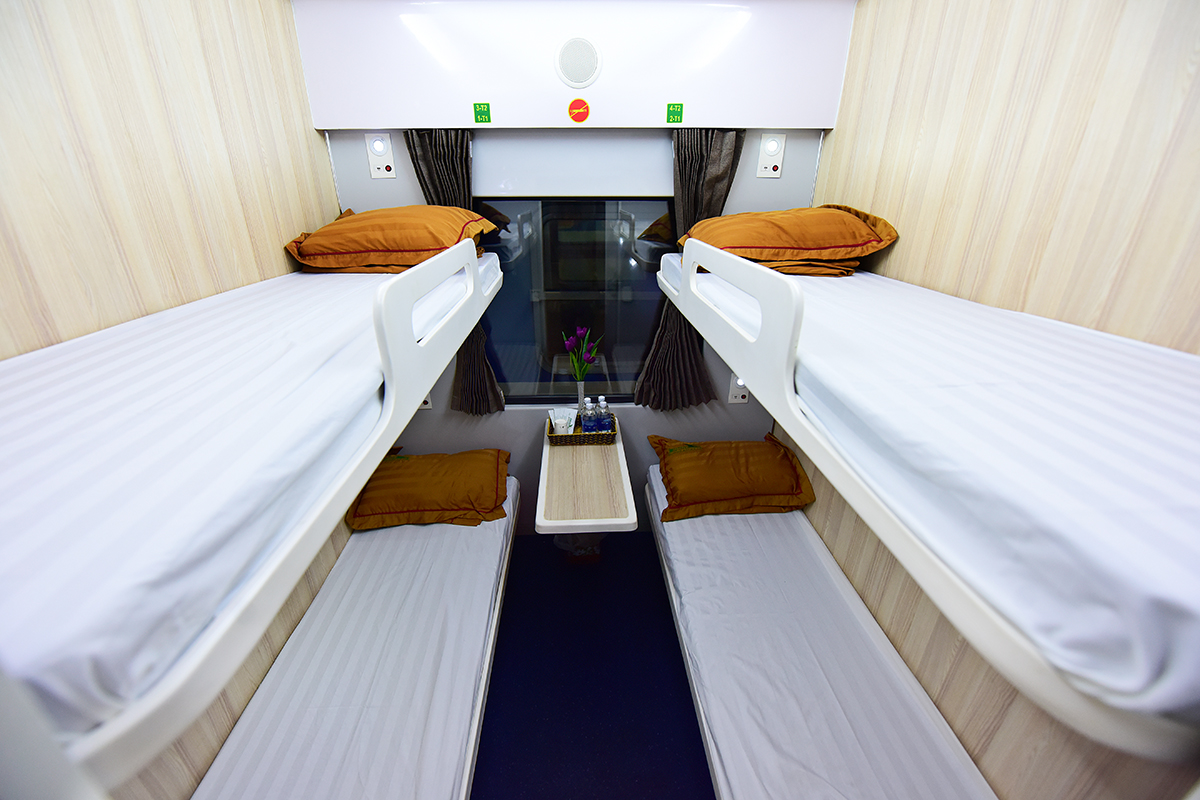 Photo: vnexpress.net
Photo: vnexpress.net
It is important to note that the trains in Vietnam are based on older Russian models and may not meet the high standards of quality seen in European rail systems. Travelers seeking an authentic experience of Southeast Asia may find this journey worthwhile; however, those who have difficulty sleeping might consider alternative travel options like buses or flights.



